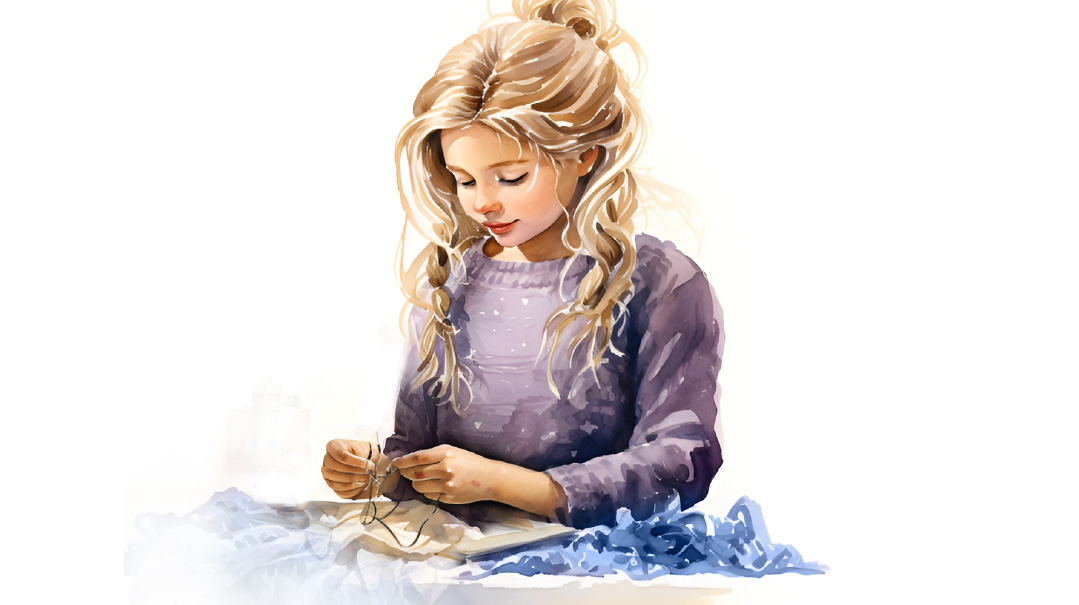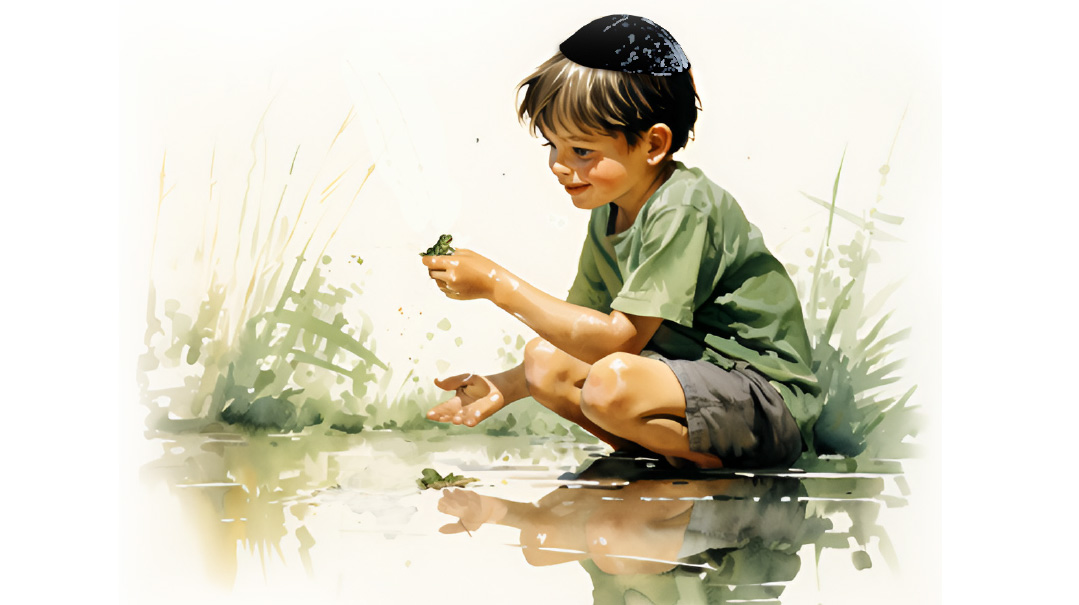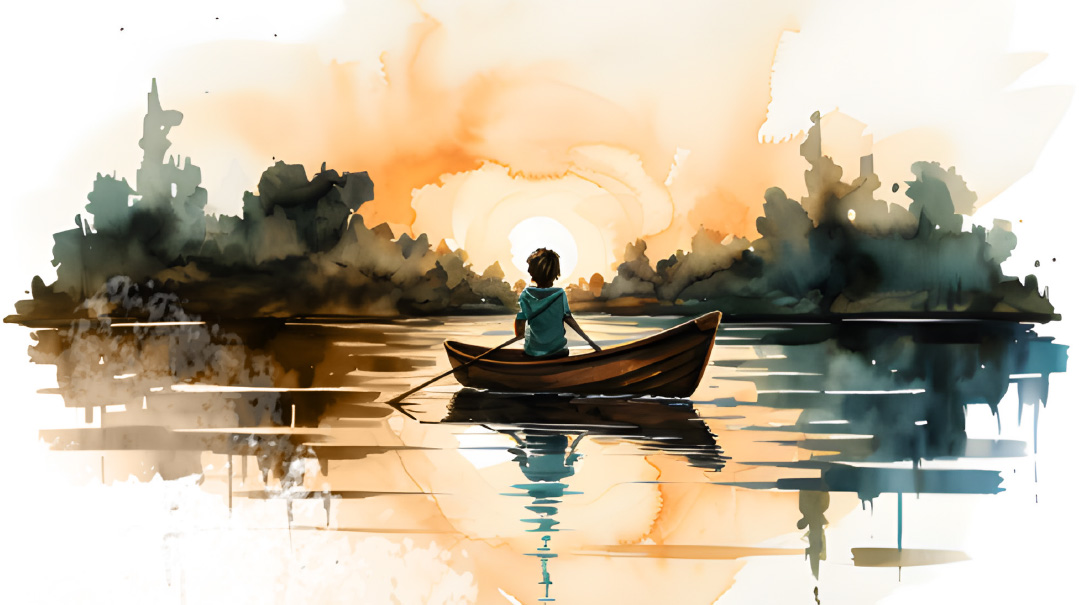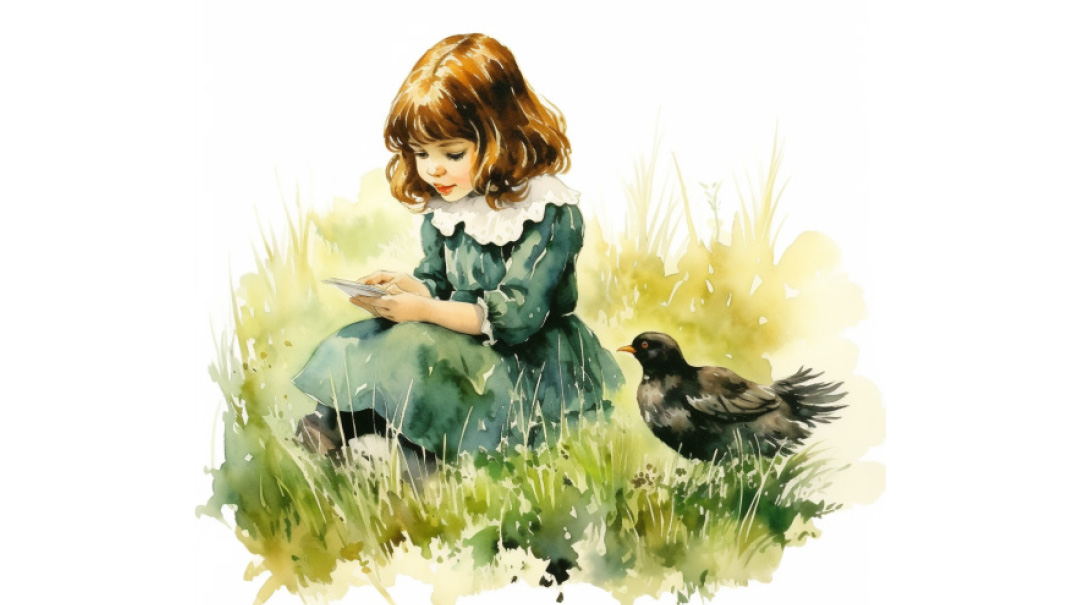Wheels of Time
| August 1, 2023Then one day, it happened! A cow broke through the fence, and kids fled in every direction
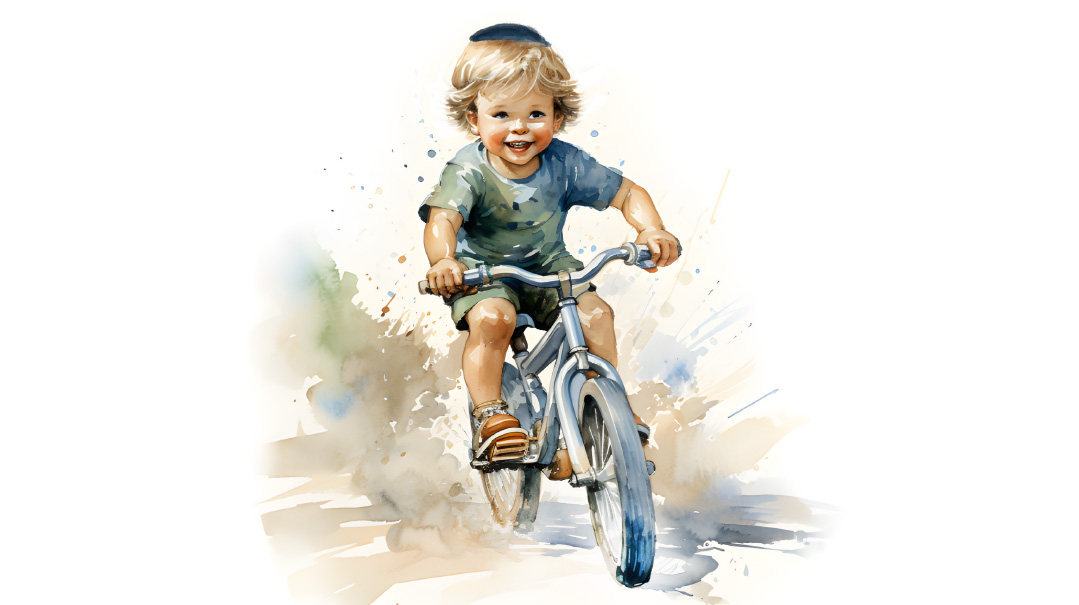
Trigger: My bicycle
Location: Replansky’s bungalow colony in New York’s Catskill Mountains
I
t’s July, and I’m in the city. Like most days, I daven early, have a quick breakfast, and head to the shed for my bicycle.
Helmet — check. Water bottle — in the holder. Sunglasses — in place.
I mount my bike, and then I reset my bike’s computer so I can calculate this ride’s mileage. With each rotation of the wheels, a magnet attached to the spokes will send my average speed to a sensor. I’ll glance at the display on my handlebar periodically to see if I’m improving my average during this ride.
But before I take off, I pause.
What am I doing here? It’s summer. I belong in the bungalow colony.
I shake myself back to the present, and slowly ride down the driveway to ease onto the street. Then the revolutions of my wheels speed up, and with them, I am transported back in time, to my family’s car, with my father in the driver’s seat as we head up to Replansky’s Bungalow Colony for the summer.
I’m no longer on Jarvis Avenue.
Instead, we’re cresting the top of the hill on Henry Houghtaling Road, and the red barn — my landmark — appears. A few hundred feet past the barn, the main house comes into view. Our car, laden with cardboard boxes roped to the roof and topped with our bicycles, pulls up in front of the bungalow.
I get my first glimpse of Replansky’s: good, nothing’s changed. As soon as my father unloads the bikes and they’re on the ground, my older brother Moshe and I are off. Freedom!
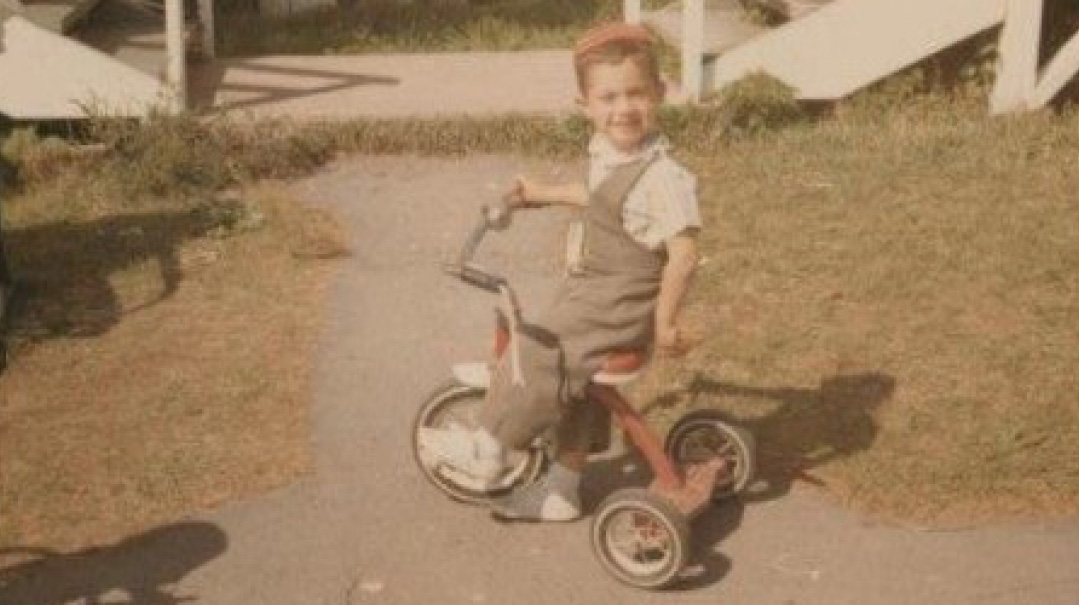
Me on my tricycle in Replansky’s, in 1966
L
ike many of the Catskills colonies, Replansky’s was named after its owners — my Great Aunt Esther and Uncle Mike Replansky. Uncle Mike, a gentle giant, and Aunt Esther, small in stature, were immigrants from Europe, well past middle age ever since I knew them.
Situated between Woodbourne and Loch Sheldrake off Route 52, Replansky’s started off as Uncle Mike’s farm. After building a few guest quarters with screened-in porches, he realized a bungalow colony would be more profitable than an agricultural endeavor. The Replanskys lived there year-round in the only heated unit on the grounds.
Uncle Mike was strong as an ox, and he built everything we needed from his workshop in the basement of the Casino, the bungalow colony’s all-purpose building. The Casino was the day camp base, the bingo room, the shul, and the kiddush and oneg hall. Remnants of the farm permeated the property, nowhere more than in the Casino, where old farming tools, milking cans, and hoes decorated the walls, and where converted wagon wheels and oil lanterns functioned as light fixtures.
The Casino’s walls were also adorned with a collection of receipts from the Hebrew Day School of Sullivan and Ulster County; Rabbi Irving Goodman, its principal (and the rav of Woodridge’s shul) came each summer soliciting funds for the Jewish education of the local youth.
One of my earliest memories is of Uncle Mike digging a huge hole outside the perimeter of the pool to bury old siddurim and other sheimos. Although he himself had little formal Torah education, the respect and honor he gave the holy volumes spoke worlds about where his heart was.
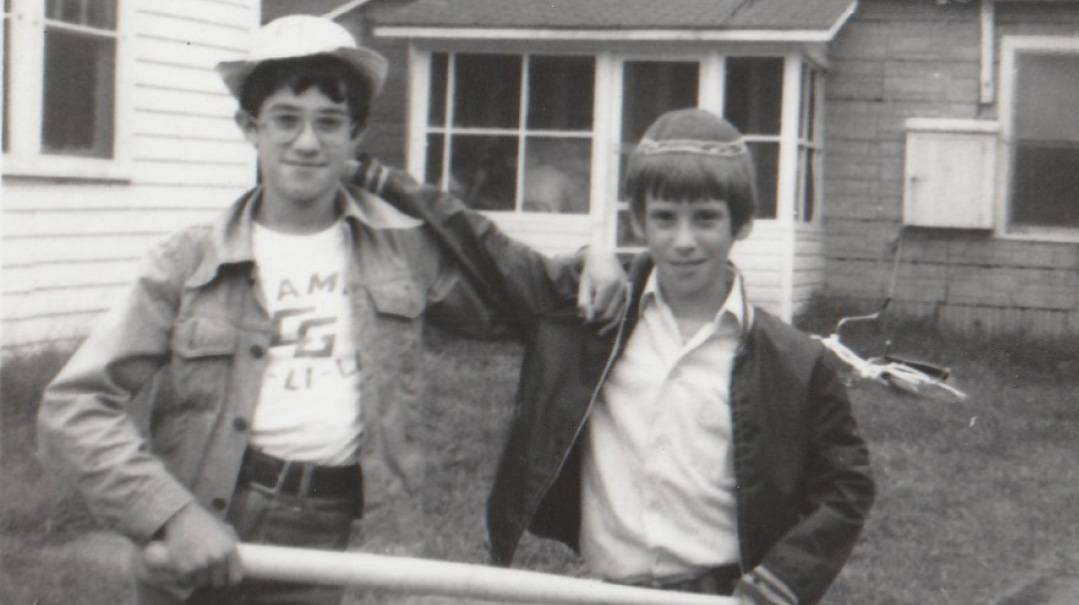
U
p in the mountains, we were mostly disconnected; the colony had one phone. The only other clue that there was an outside world was the occasional announcements echoing from the PA system at Camp Tubby, a few hundred feet through the woods as the crow flies. When we rode our bikes past the camp, I had no clue that my future wife, whom I did not yet know, was spending her summers there.
Replansky’s was a no-frills operation. The electricity couldn’t handle the most basic electrical functions; just using a simple kitchen appliance required first knocking on the wall and yelling to our neighbors — Itchie and Pauline on one side, Joe and Reba on the other — “We’re using the toaster oven!” Otherwise, we’d cause a blackout.
Uncle Mike had two wells dug on the grounds. One pumped up clear water, the other rust-colored, and naturally, the bungalow faucets were connected to the colored water, as was the swimming pool (they said it was healthy). The pool was so murky we couldn’t see the bottom, and we used to float on inflatable inner tubes from old car tires (produced before radial tires existed). If we wanted to drink clear water, we had to schlep bottles from the clear water well.
From when we were four until we were pre-teen, day camp filled most of our daytime hours, beginning with calisthenics at 9:30 (fitness guru Jack LaLanne was popular back then) with a break back to the bungalow for lunch. Most activities were outdoors, but the occasional thunderstorm took us into the Casino for lanyard or plaster mold-making and painting. When we got older, we even scheduled inter-day-camp softball games against our archrivals, Fisher’s bungalow colony.
Once day camp ended, we’d come up with our own adventures. After the moon landing in 1969, the monkey bars Uncle Mike had built from old plumbing pipes became a space ship. In the ’70s, when Evel Knievel was leaping over buses on his motorcycle, we built a miniature ramp and flew off of it on our bicycles (for a grand distance of three feet). Another time we created a go-kart with wood scraps from Uncle Mike’s workshop, axles and wheels from old baby carriages, and spare nuts and bolts. Our go-kart was human-powered, with the wheels moving when someone pulled the rope in front.
We traveled the world without ever leaving the grounds — and we were never bored. As long as it wasn’t raining, we were outdoors — picking blueberries, wading in the river, catching frogs, salamanders, and snakes, watching cows from the red barn inch their way over to the colony fence. Rumor had it that red clothes would anger them, causing them to break through — and then one day, it happened! A cow broke through the fence, and kids fled in every direction.
The paths around the colony were always packed with bikes. Summer by summer, we’d advance, one by one, from tricycles to training wheels. I remember the big day when we took my training wheels off. My father ran alongside me as I balanced by myself, and everyone celebrated this first taste of independence.
Eventually, I would bike with my friends all over the country roads, from town to town. Heading left out of the colony, we would pedal to the top of Roy’s Hill a half mile away. From the top, the magnificent view of the Neversink Dam came into focus. And then the descent— close to a mile downhill on the winding country road, cooling winds rushing our bodies on a hot summer day. Ahhh. The climb back up was a different story.

The annual day camp photo
D
uring the week, the colony was populated mostly by women, children, and a few retirees in the Cottage, a two-story wooden structure with one-bedroom apartments. Many of the women did not yet drive, so shopping in town wasn’t possible. No problem — Kanowitz’s Dairy, the Woodbourne grocery store, came twice a week selling milk and basic food staples. One glimpse of the blue truck sent us screaming — “Kanowitz is here, Kanowitz is here!” Other roaming vendors touted their wares from their vans and cars, the most exciting of which was the weekly visit of “the Whip.” Situated atop a converted truck, the two-seater cars “whipped” us along an oval track for the grand price of a quarter.
My father’s return from his office job in New York City to the country on Thursday nights signaled the beginning of Shabbos preparation — and with it, hopefully, a trip into town. Though rural Woodbourne didn’t have a kosher pizza shop until the 1970s — the largest and most prominent store was the gun shop (which did eventually become a pizza shop) — town was still exciting. Kanowitz had provisions in store that were unavailable on the truck, and nothing could beat a potato knish at Mom’s Knishes, freshly fried by Mom herself. The go-to was Lebed’s Pharmacy. Need a hula-hoop? Check. Stickball or wiffle ball bat, pink Spaulding punch ball? Yup. Butterfly net? Mandatory — though the kid to catch a butterfly would be the first.
Shabbos preparations required knocking on walls to take turns showering with our neighbors, as pressure and hot water were scarce. Shabbos morning, I awoke to the sight of my father and Itchie reviewing the parshah on their respective porches. The afternoons were relaxing — a few shiurim on the lawn, quiet time on beach chairs, or the chess game Izzy held on his porch weekly. Shabbos walks extended like a parade up and down Houghtaling Road. Cries of “Car, car,” would ring out as the first person to spot a vehicle rushed everyone else to the side of the road.
In 1974, Uncle Mike passed away. Heshy, a tenant and the former head counselor, took over the maintenance of the grounds. Aside from being a master educator and talmid chacham, he worked wonders with his hands. However, after two years it became apparent that Aunt Esther couldn’t continue running the colony, and she put it up for sale.
Nobody remembers who suggested the tenants buy the property together, but once the idea took root, serious planning commenced. Thirteen families bought the colony and incorporated, becoming probably the first cooperative bungalow colony in the Catskills. It was rebranded as Clearwater Estates, a tongue-in-cheek tribute to the desperate water situation. (Eventually we built a new pool and connected it and the faucets to a clear water well. Progress!) The remaining units were rented as usual, with many familiar tenants staying on for decades. Aunt Esther, who by this time had moved to Kew Gardens, New York, to be closer to family, continued coming for the next few summers until her passing in 1977.
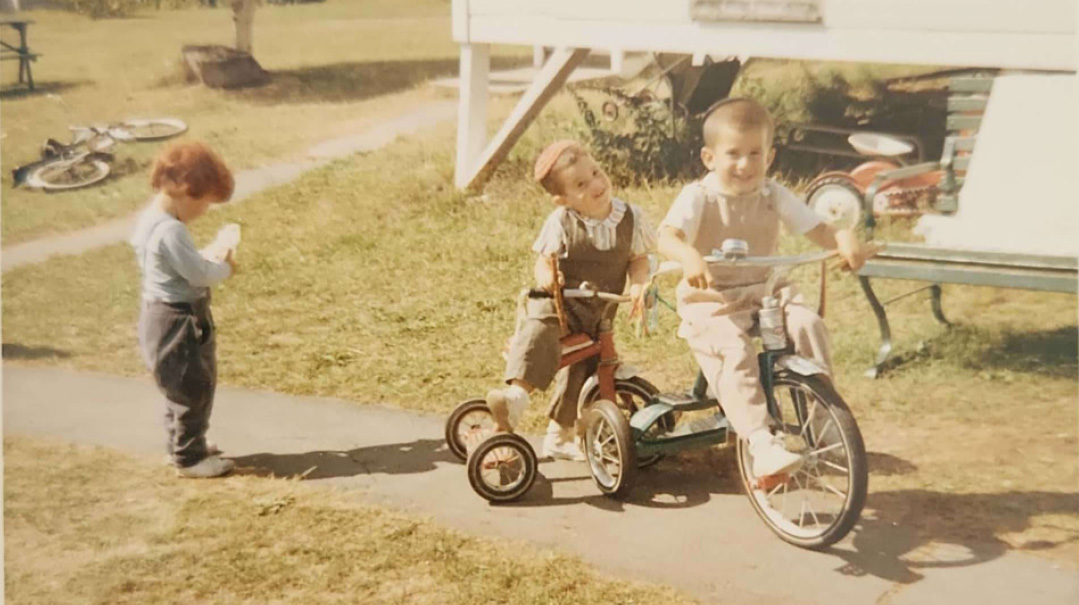
Me and my brother Moshe on tricycles in 1965
I
n the mid-’70s, as we grew into our teens, we realized we were maturing spiritually — and there wasn’t much infrastructure in Replanskys for that sort of growth. You couldn’t count on a minyan during the week; for Tishah B’Av, Heshy drove us to nearby Camp Adas Yereim. My father hired one of the counselors to learn with us a few times a week, but it wasn’t enough.
Our transition to sleepaway camp was gradual. I started going for one month a year, then eventually the whole summer. No matter where we were, though, we always came back. On days off, we’d bring camp friends to visit, introducing them to bungalow life and my mother’s home-cooked meals. At summer’s end, a week in our private oasis was a welcome refresher before heading back to the city for another school year.
By the early 2000s, the red barn collapsed; it was never rebuilt. As the years passed, many of the co-op owners retired. My parents moved to Florida. The day they told me they would be selling their share in the colony to spend the entire summer down south was one of the saddest days I can remember.
Aunt Bailey and Uncle Seymour were still there, though, and I’d stop by when I was in the mountains, tramping through the woods to the pond for old times’ sake. The remaining owners kept the colony going for a few more years, but as more moved away or passed on, they realized the property would have to be sold.
Building winterized homes, as other former colonies had done, was forbidden; the Town of Fallsburg’s zoning laws had designated the land as agricultural (the cows probably lobbied for that law). Two years ago, a yeshivah bought the property for its summer home. We all chuckled sympathetically when my cousin visited last year and was told about the confusion that ensued when the newly installed air conditioners blew the electricity the first Erev Shabbos.
To this day, when I pass through nearby Woodridge, I go to the shul’s cemetery to daven at Aunt Esther and Uncle Mike’s kevarim. The Replanskys never merited children, but the physical infrastructures they built, literally by hand, continue to allow bochurim an enhanced learning environment. I am sure the Torah learned in the Casino-turned-beis midrash is a zechus for Uncle Mike and Aunt Esther.
My bike ride nowadays is usually from Far Rockaway to Belle Harbor and back. If I feel adventurous, I hop onto the ferry to Manhattan with my bike to cycle the Hudson River Waterfront Greenway up to the Little Red Lighthouse under the George Washington Bridge. Nothing can rival those carefree childhood rides along the Neversink River, through the cornfields, over the rolling hills, on the back road to Woodbourne. But I pedal on here in the city, because there’s no going backward on a bicycle. —
Rabbi Aharon Friedler has been a rebbi at Hebrew Academy of Nassau County in Uniondale, New York, for three decades. He lives in Far Rockaway, New York.
(Originally featured in Mishpacha, Issue 972)
Oops! We could not locate your form.

